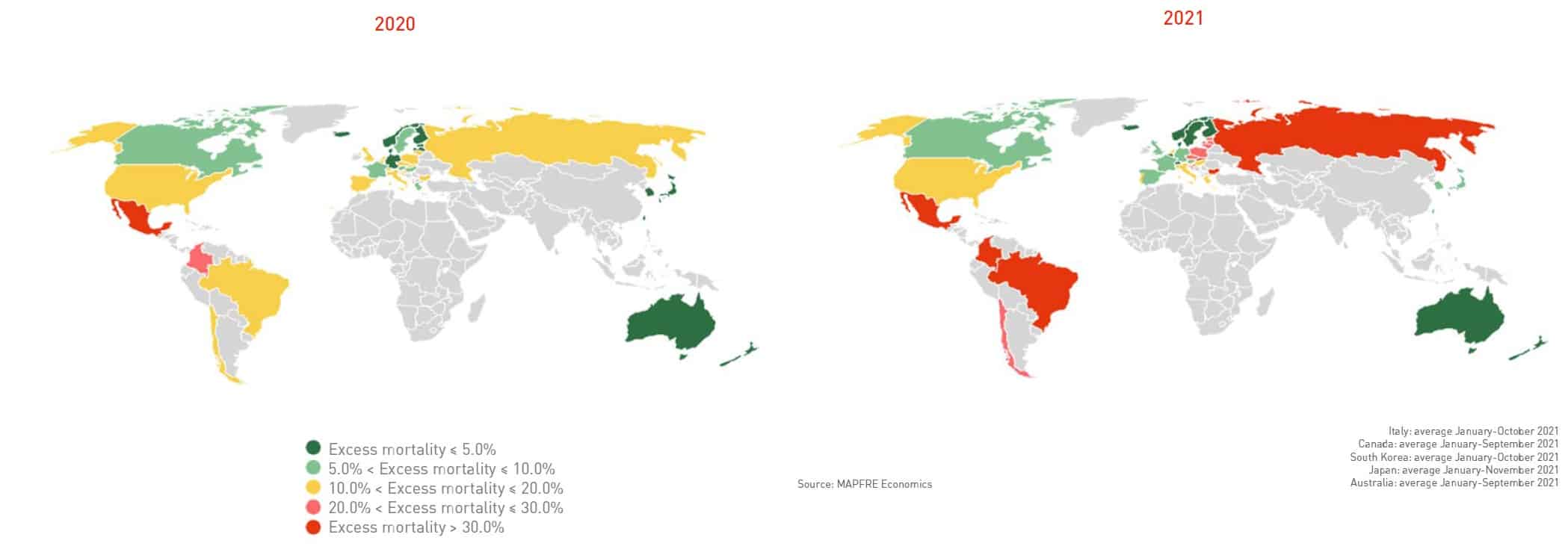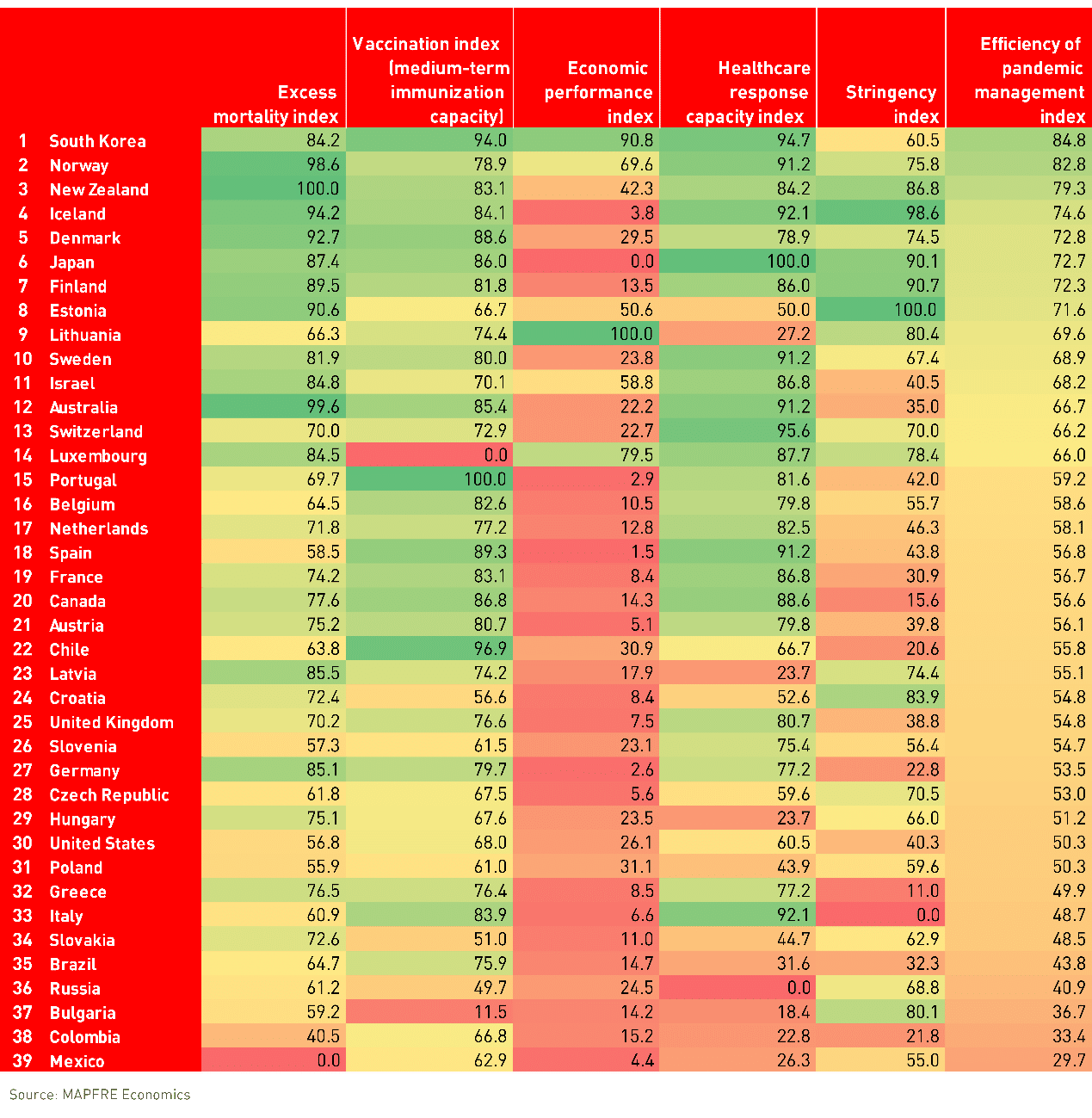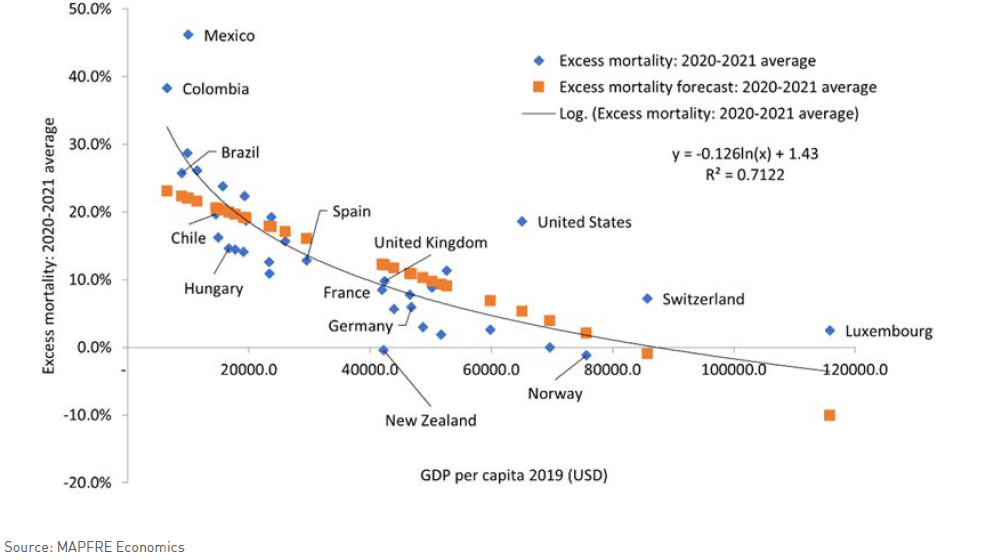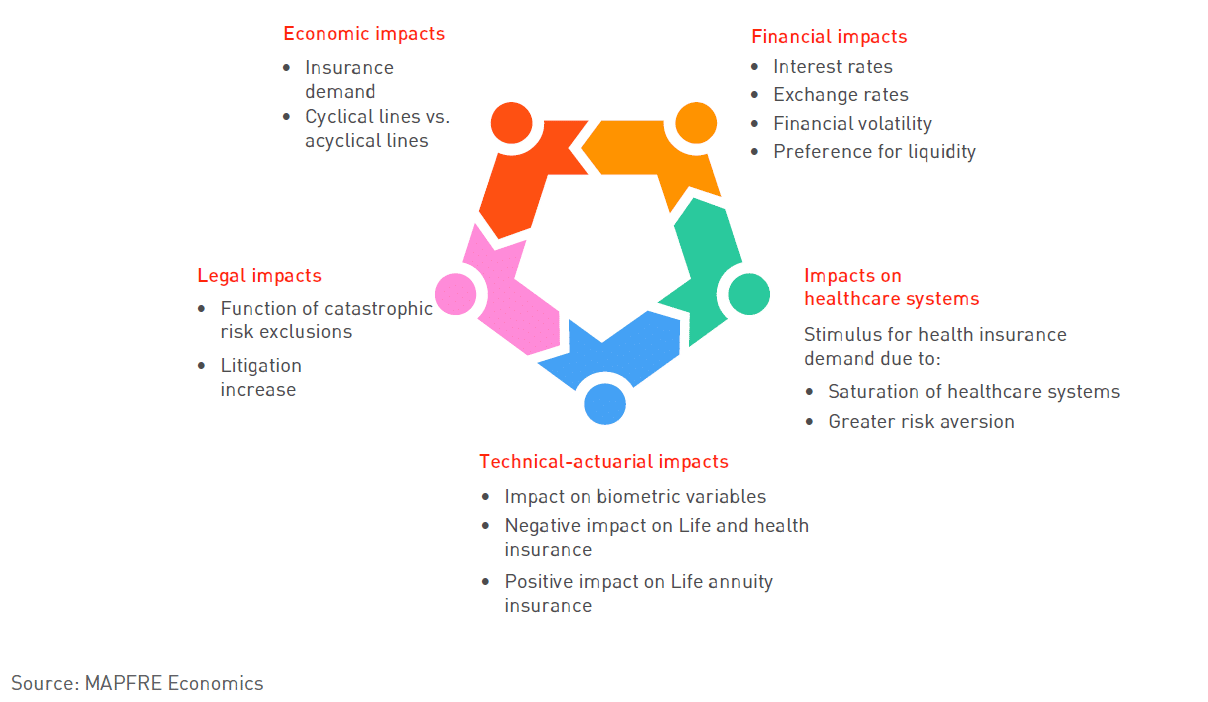Excess mortality, pandemic management, and insurance industry impacts
Author: MAPFRE Economics
Summary of the report’s conclusions:
MAPFRE Economics
COVID-19: a preliminary analysis of
demographic and insurance industry impacts
Madrid, Fundación MAPFRE, March 2022
One of the challenges when analyzing the severity of the pandemic in terms of mortality is the uncertainty regarding the actual data on infections and deaths from COVID-19. For this reason, we use a specific indicator called “excess mortality,” which disregards the official pandemic data and is instead based on the number of deaths for any cause recorded during the pandemic compared with the mortality data during a pre-pandemic period, considered a “normal” environment from an epidemiological point of view. By comparing mortality per 100,000 people in 2020 and 2021 with the annual average for the 2016–2019 period (immediately prior to the spread of the original strain of the virus), we can easily identify the different pandemic waves and provide insight into their severity, both direct and indirect. Excess mortality in a selection of 39 countries, thus calculated by MAPFRE Economics, is shown in Chart 1.
Chart 1
Select countries: annual excess mortality, 2020 and 2021

We observe that in 2020, excess mortality in two of the countries analyzed, Colombia and Mexico, was more than 20% on average for the year. In the rest of the world, the countries in the sample showed excess mortality of less than 20%. In particular, excess deaths in large countries such as Brazil, the United States, Russia, Italy, the United Kingdom, and Spain stood at 10% to 20%, while others, including New Zealand, Australia, Norway, and Denmark, had no excess mortality whatsoever, and even negative figures.
However, the situation changed dramatically in 2021, when countries and regions like Brazil, Chile, Russia, and Eastern Europe began to show excess mortality of more than 20%, while others in Western Europe improved, indicating that some countries were more capable of responding to and addressing the consequences of new pandemic waves.
Efficiency of Pandemic Management Indicator (EPMI)
Deepening our analysis of the situation and of the excess mortality observed in 2020 and 2021, we have developed an indicator for a total of 39 countries intended to assess how efficiently these countries managed the pandemic. Known as the MAPFRE Economics “Efficiency of Pandemic Management Indicator (EPMI),” this summary indicator is based on five partial measures with the rationale that, overall, the countries that did the best job of managing the pandemic were the ones with lower excess mortality and stronger economic recovery in 2021 after the decline in 2020. They also had greater established healthcare capacity to meet the population’s needs during the health emergency, higher rates of fully vaccinated population, and lower levels of economic and social restrictions (see Table 1).
Table 1
Efficiency of Pandemic Management Indicator (EPMI)

According to the MAPFRE Economics EPMI, the country that managed the pandemic most efficiently was South Korea, followed by Norway and New Zealand. Iceland, Denmark, and Japan (whose healthcare system is ranked among the best in the world) also stand out. The countries with the lowest scores include Mexico, Colombia, Bulgaria, Russia, and Brazil, which all have weak healthcare systems. Our attention is also drawn to the elevated excess mortality in Mexico, the highest in the sample, as well as in Colombia. Latin America has been hit particularly hard by the pandemic, and despite having weak healthcare systems, countries in the region have made a tremendous effort to vaccinate their populations, especially Chile.
Per capita income and excess mortality
In the analysis by MAPFRE Economics, a high correlation between the excess mortality differences in the 39 countries and their populations’ per capita income was detected (see Chart 2). If we take the average excess mortality in the 2020–2021 period and calculate the fitted regression line with per capita GDP in the year before the pandemic, the coefficient of determination is 0.7122. In other words, among the various factors that may explain lower excess mortality among countries, higher per capita income would explain 71.2% of the differences and 28.8% would be attributable to other factors.
Chart 2
Excess mortality vs. GDP per capita: fitted regression line

The pandemic’s impacts on the insurance industry
This crisis has had significant repercussions on revenues and profitability in the insurance industry due to the economic and legal effects (related to contractual clauses that exclude pandemic coverage), as well as the effects on healthcare systems and biometrics that may affect the life expectancy of the global population (see Chart 3).
Chart 3: Summary of the pandemic´s on the insurance industry

In addition, insurers’ efforts to remain operational during lockdowns have accelerated digitization processes, ensuring that underwriting and customer service were not paralyzed and speeding up plans to invest in technological resources and profiles.
At the following link, you can find the study COVID-19: a preliminary analysis of demographic and insurance industry impacts, by MAPFRE Economics, which takes a closer look at excess mortality and the pandemic’s effects on life expectancy and the insurance industry.



